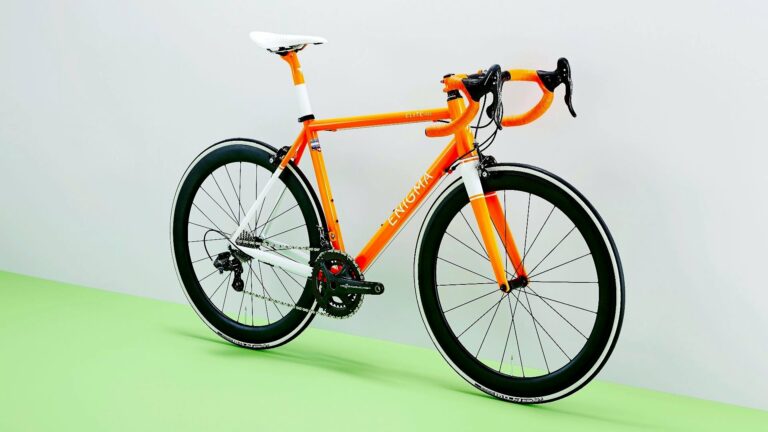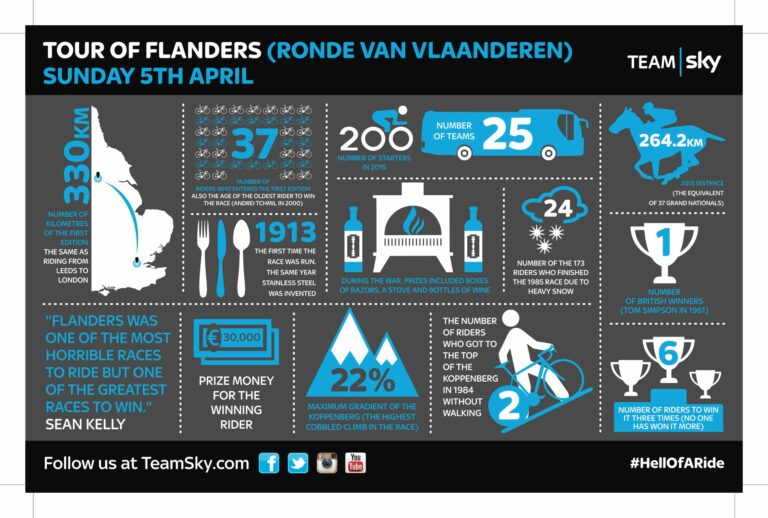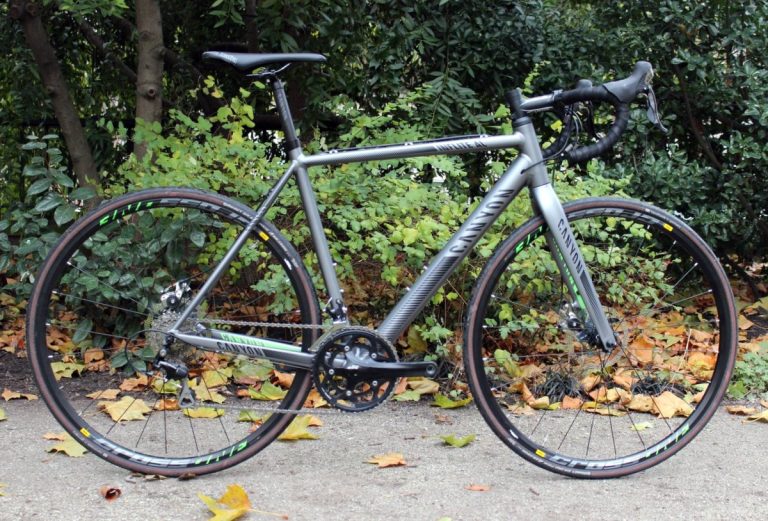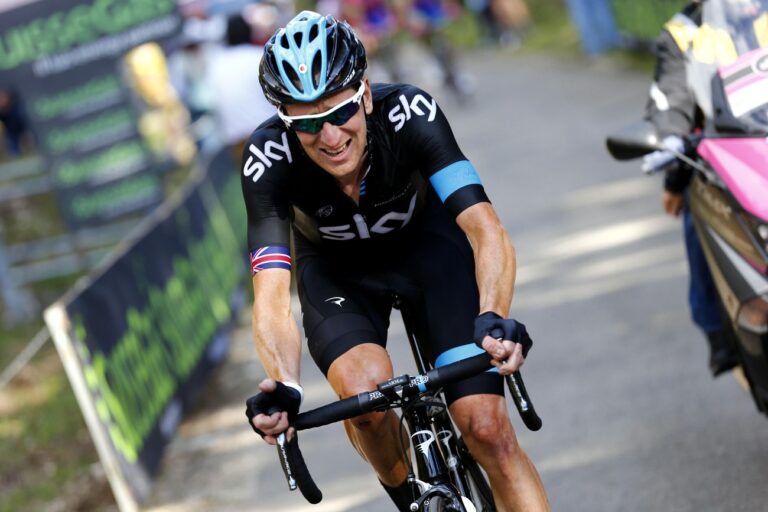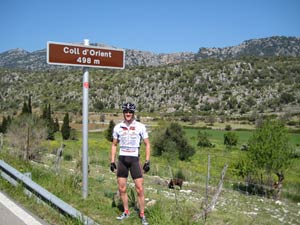 Atop the Coll d’Orient |
A short week of spring cycling in Majorca might be just the tonic you need to round off a long, cold winter and provide a launch pad for your 2009 season.
Whether your goals this year include riding a tough sportive like my two travelling companions, who are both doing the Ventoux Etape du Tour, trying your hand at racing or time trialling, or perhaps gearing up for triathlon, Majorca is a great place to put in the hard yards before it’s too late. Less than two hours from the UK, Majorca gives Brits an accessible taste of cycling nirvana. Here the bike and not the car is most definitely king of the road.
We travelled in April and stayed in Port de Pollenca at the north end of the island, which gives easy access to the mountains of the Serra de Tramuntana. The three of us hired bikes from the excellent Pro Cycle hire a few hundred metres away. Initial qualms about not taking our own bikes were soon dispelled when Bruce produced two lovely Massi Pro-Carbons and an alu/carbon Pinnacle shod with Fulcrum Racing wheels. All you need to take are your own pedals, helmet, shoes (and saddle if you wish). The bikes were serviced perfectly and fitted with computers. Bruce even supplies chain lube and a puncture repair kit. A word to the wise, though – you need to order your bikes well in advance of your visit to avoid disappointment and get the bike you want.
Day 1 and, all kitted out, it was off to pay homage to Sa Calobra, Majorca’s cycling shrine. Heading out of Port de Pollenca on billiard table-smooth roads, you soon turn off right onto the gently undulating valley road to Campanet. This has to be one of the most scenic stretches of road on the island. Lined with fig trees, olive groves and lush green fields it is part framed by the Tramuntana mountain range silhouetted ominously against the skyline. The morning air was heavy with the pungent fragrance of orange blossom and, as we bowled along under blue skies and temperatures in the low to mid 20’s, life felt good.
The business part of the day soon kicks in though with the climb up from Caimari to Lluc at about 580 metres. A mostly seated climb can be done in the big ring if you’re feeling good. The climb winds its way up through the cooler air of the forest pines again on a great road surface. The café at the top was already packed with cyclists mostly from the UK when we arrived. A welcome coffee and chat and for some a sweet pastry of heroic proportions before it was onto the days’ main event.
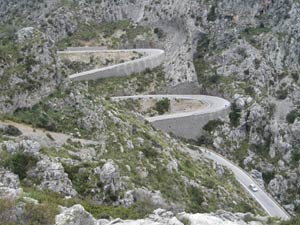 The switchbacks of Sa Calobra |
Sa Calobra is legendary. It is not the highest but is reputedly the hardest climb on Majorca and definitely one for any self respecting CV. You don’t happen on Sa Calobra by accident either. It’s a one way dead end road down to the coast and you have to make a conscious decision to take it on. From the summit at the Coll dels Reis at 682 metres you see the road coiling down the mountainside like an expectant serpent – a cobra – poised ready to strike the unwary.
It begins with an awesome 10 minute descent, never massively steep but with some hairy switchbacks which serve to tame your speed. Watch out too for the steady stream of coaches ferrying tourists up and down to the coast. What goes down must come back up and after we had re-assembled at the base and had stopped grinning from ear to ear it was time to engage the 27 tooth sprocket for the six mile ascent, which goes on and on before cruelly ramping up at the top to the unofficial ‘finish’ line chalked on the road. After the climb, swooping back roads home brought to a close a testing 4.5 hour ride.
Day 2 and we all appreciated a lighter day. The two hour ride out and back to the lighthouse at Cap Formentor on the northern tip of the island was in fresher conditions where a gilet and arm warmers were handy. Overnight showers led to greasy hairpins waiting to catch out the unwary. Two smaller climbs totalling about 600 metres of comfortable climbing are worth it for the panoramic views of Pollenca Bay.
Day 3. Refreshed and time for some more serious climbing. The route took us from the hotel on a loop to the south-west, taking in the three climbs of Coll d’Orient at 498 metres, Coll de Soller at 497 metres and, finally, the highest cycle climb in the Tramuntana, the Puig Major at about 1000 metres. On Majorca’s lightly trafficked roads cycling is very different from the UK experience and at Soller the road tunnel for vehicles means that on the hairpin climb its like riding on closed roads with only other cyclists for company (or competition!). Be sure to check out the imaginatively named ‘Bar Stop’ at Soller for probably the best Serrano ham baguette you’ll taste this side of Serrano. Our coffee stop was in the delightful old square at Bunyola which was packed with cyclists stocking up on carbs before taking on Puig Major.
After Sa Calobra, Puig Major is a big draw for cyclists coming to the island. Large contingents of German and Swiss cyclists meant there were plenty of individual pelotons for us to pick off as we weaved our way up the 14 km climb. Although Puig Major is a long steady climb it averages 5-6%, similar to Sa Calobra, so is not especially steep. My Massi was fitted with a compact chainset and 12-27 on the back so I had a good low range to spread the load but 53/39 with 27 on the back would be fine. The road disappointingly doesn’t take you right to the very summit, finishing some 400 metres short in a lay-by by the tunnel entrance. Here riders from all nationalities, shapes and sizes converge to chatter about their days exploits in the saddle.
Continuing through the tunnel you begin one of those awesome fixed grin swooping hairpin descents which serve as payback for the uphill grind. However beware, descend the other side of Puig Major any faster than 45 mph and you might find yourself taking a more direct route than planned! On past the blue lake the gradient levels out before climbing up to the turn-offs for Sa Calobra and then Lluc. Once past the monastery there’s a super descent and then it’s a fairly flattish dash back to Port de Pollenca with a tailwind helping nudge the average speed for this stretch to 29 mph. In all I reckon this 90 mile route would be manageable for someone with an above average level of cycling fitness and for those with more experience and miles in their legs it’s a really good days workout.
We finished our four day week with a flat 62 mile route taking us south to Petra via Alcudia, Con Picafort and Santa Margalida. The countryside here doesn’t rise much above 100 metres and is more agricultural than in the north with wide open fields of wheat. Petra is another lovely small town with its quaint square and cafes and again is a magnet for cyclists looking to refuel. On this ride we returned via Sineu, Inca, Selva and for one last time along the beautiful Campanet valley before returning our bikes to Bruce in Campanet and celebrating our week with an ice cream on the seafront.
In 4 days we clocked 246 miles in 16 hours of cycling. All 3 of us felt stronger and fitter by the end and only wished we had time for one more ride… Still, we are better prepared for the season than before and no doubt will be up for more next Spring.
Jeremy, John and Jon travelled with Easyjet from Gatwick to Palma and stayed half board at the 3* Hotel Daina in Port de Pollenca. Bike rental was taken care of by www.procyclehire.com. Car hire by Goldcar. Travelling to Majorca on cycling specific holidays after June is not recommended given the high daytime temperatures.

